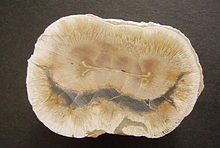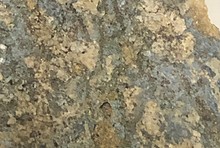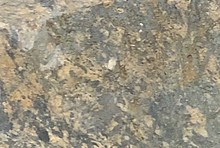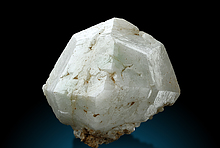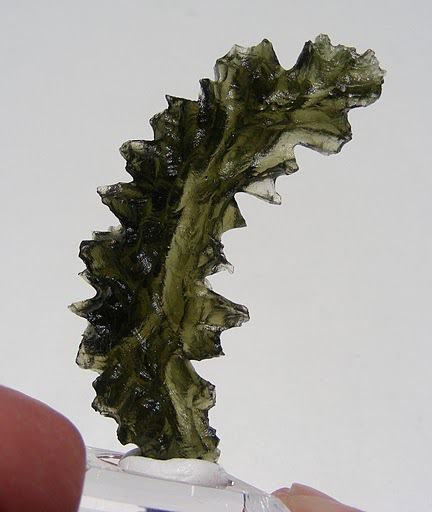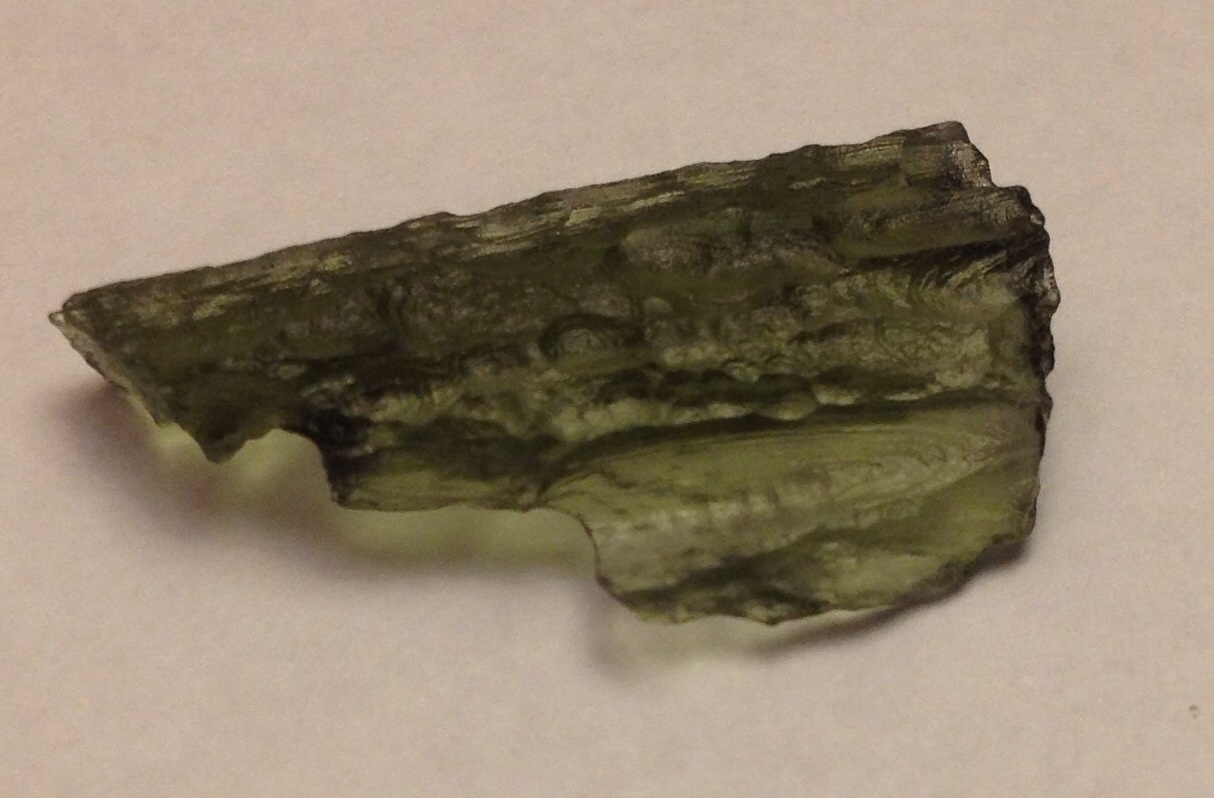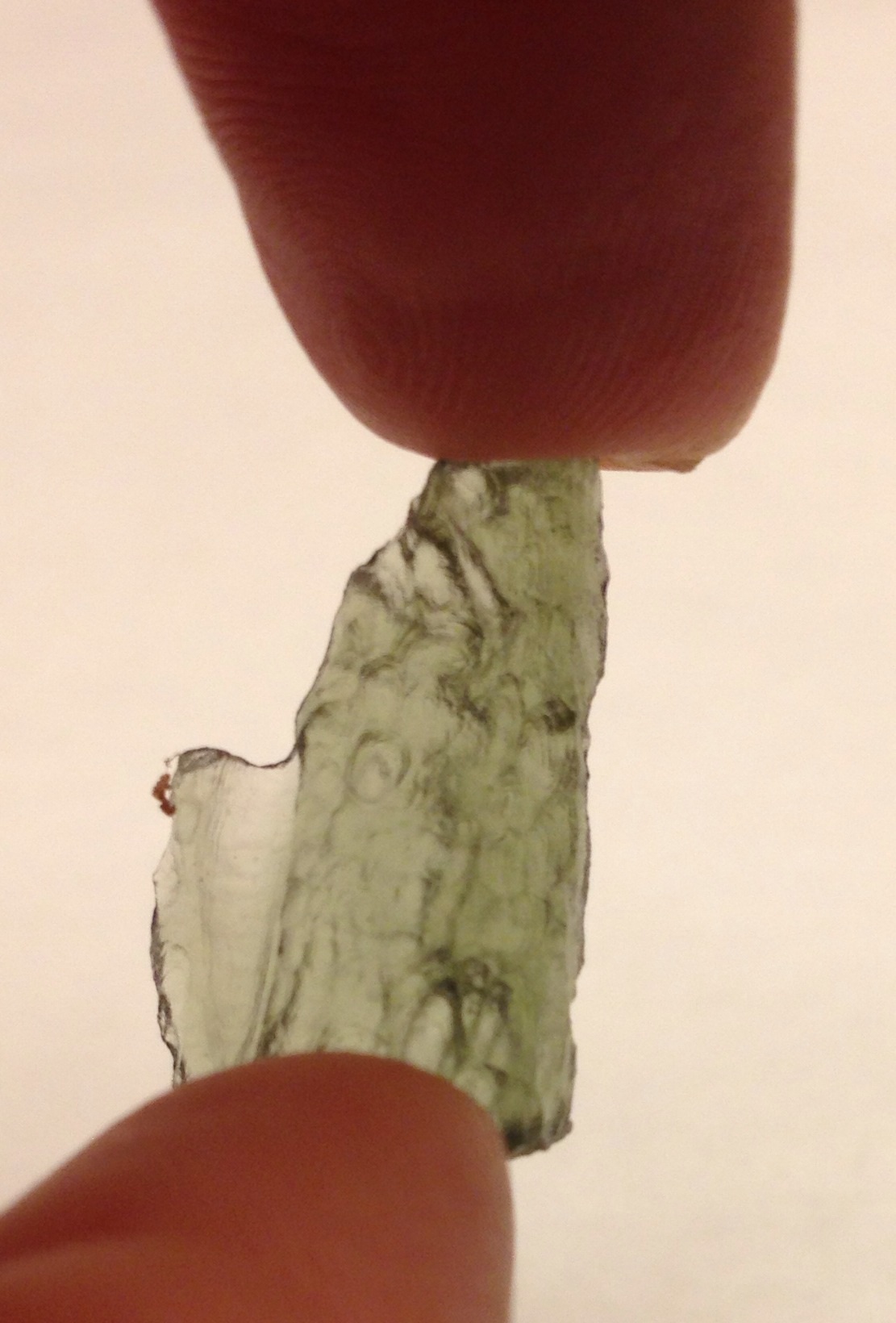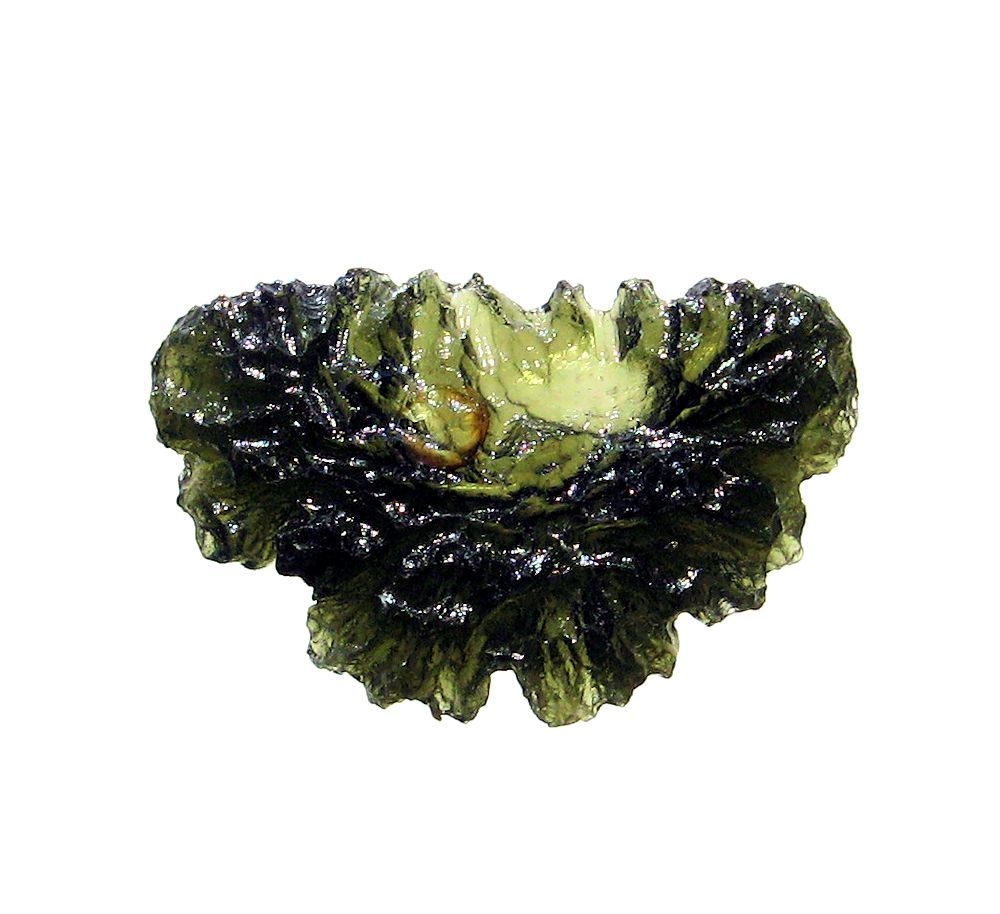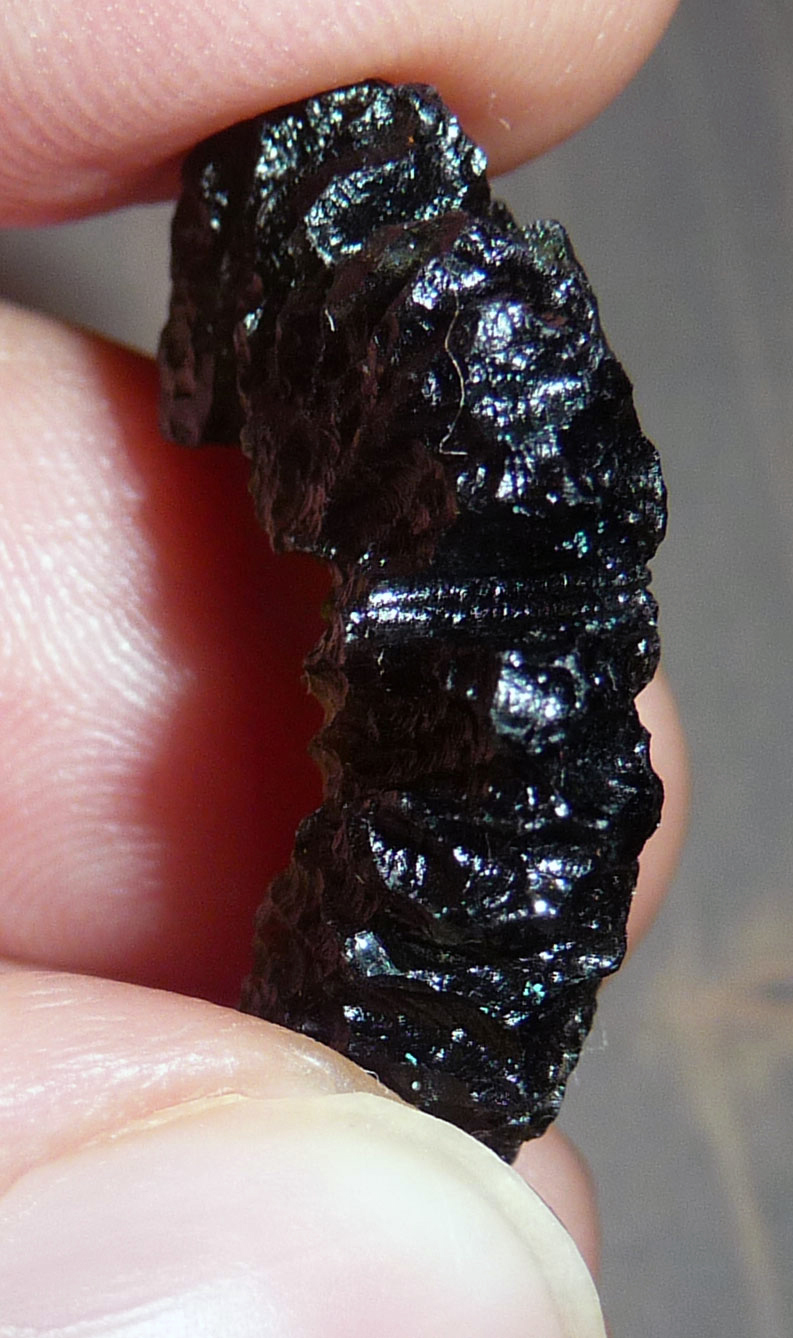Home PageAbout MindatThe Mindat ManualHistory of MindatCopyright StatusWho We AreContact UsAdvertise on Mindat
Donate to MindatCorporate SponsorshipSponsor a PageSponsored PagesMindat AdvertisersAdvertise on Mindat
Learning CenterWhat is a mineral?The most common minerals on earthInformation for EducatorsMindat ArticlesThe ElementsThe Rock H. Currier Digital LibraryGeologic Time
Minerals by PropertiesMinerals by ChemistryAdvanced Locality SearchRandom MineralRandom LocalitySearch by minIDLocalities Near MeSearch ArticlesSearch GlossaryMore Search Options
The Mindat ManualAdd a New PhotoRate PhotosLocality Edit ReportCoordinate Completion ReportAdd Glossary Item
Mining CompaniesStatisticsUsersMineral MuseumsClubs & OrganizationsMineral Shows & EventsThe Mindat DirectoryDevice SettingsThe Mineral Quiz
Photo SearchPhoto GalleriesSearch by ColorNew Photos TodayNew Photos YesterdayMembers' Photo GalleriesPast Photo of the Day GalleryPhotography
╳Discussions
💬 Home🔎 Search📅 LatestGroups
EducationOpen discussion area.Fakes & FraudsOpen discussion area.Field CollectingOpen discussion area.FossilsOpen discussion area.Gems and GemologyOpen discussion area.GeneralOpen discussion area.How to ContributeOpen discussion area.Identity HelpOpen discussion area.Improving Mindat.orgOpen discussion area.LocalitiesOpen discussion area.Lost and Stolen SpecimensOpen discussion area.MarketplaceOpen discussion area.MeteoritesOpen discussion area.Mindat ProductsOpen discussion area.Mineral ExchangesOpen discussion area.Mineral PhotographyOpen discussion area.Mineral ShowsOpen discussion area.Mineralogical ClassificationOpen discussion area.Mineralogy CourseOpen discussion area.MineralsOpen discussion area.Minerals and MuseumsOpen discussion area.PhotosOpen discussion area.Techniques for CollectorsOpen discussion area.The Rock H. Currier Digital LibraryOpen discussion area.UV MineralsOpen discussion area.Recent Images in Discussions
Fakes & FraudsMoldavite real or fake?

4th Apr 2011 03:06 UTCCheng Tan

4th Apr 2011 03:19 UTCAlfredo Petrov Manager
Some fake moldavites are made by etching green man-made glass with hydrofluoric acid.

4th Apr 2011 03:22 UTCWayne Corwin
A larger photo with light comming thru it from the back might help.
Wayne

4th Apr 2011 04:46 UTCDan R. Lynch
4th Apr 2011 06:00 UTCMatteo Chinellato Expert

4th Apr 2011 06:43 UTCCraig Mercer
I will post a few photographs of genuine moldavites here for you to look at.
4th Apr 2011 06:46 UTCRock Currier Expert

4th Apr 2011 08:38 UTCCraig Mercer
4th Apr 2011 10:36 UTCTomasz Praszkier Manager
Tomek
4th Apr 2011 12:10 UTCVítězslav Snášel Expert
here you have some photos moldavites and some details sculpture
http://www.mindat.org/user-4870.html#2_0_10860_0_0_0_
Maybe it helps :)
Vita
.....and three photos moldavites from hand

4th Apr 2011 13:32 UTCCraig Mercer
4th Apr 2011 13:39 UTCIbrahim Jameel Expert
The Chinese-style base (which is so often put on fake Chinese minerals) reeeeeally doesn't help perceptions.... of course that has nothing to do with the stone. :o

4th Apr 2011 14:09 UTCCraig Mercer

4th Apr 2011 15:17 UTCAmanda Hawkins

4th Apr 2011 16:13 UTCCheng Tan
Thks for your messages.
I tried taking pictures with it's back lighted but my camera can't focus too well when it gets closer.
The pictures also appears more green than the original color when it's lighted behind.:S I just dun know why.
The original view looks more yellowish than the picture.
Hopefully these picture are better than the previous one....
I do have a few pieces of smaller moldavite, but I just can't resist in buying this one since I never seen one so big before.
So after spending a few thousand buck, I start to worry if I gotten a real one since I heard there are fake ones around from China. So I get worry if anyone may have imported any fake stuff. By the way, this is only one in the store. The store owner has about 2 more pieces about half of this size, but this is the largest he got.
Hopefully this helps, else I will have to find another camera.
Thks for all you comments.
Cheng

4th Apr 2011 17:16 UTCJakub Jirásek Expert
being from the Czech Republic does not qualify me as a moldavite expert, but I have found more than hundred of them by my own. Shape and colour are O.K., it seems to be the real one.
It is quite easy to fake cut ones, which is the reason they have been faked by green glass for more than century. Although is is possible to reproduce similar weathering pattern ("sculptation") on artifical glass by the chemical leaching, it is not worthy, since most moldavites are quite cheap during these days (lots of illegal small scale mines). And you can allways look thru microscope and look for lechatelierite needles, proving its natural origin.
I will probably add moldavite localities at Mindat, even if they are rocks and not minerals.
Jakub
4th Apr 2011 19:09 UTCEugene & Sharon Cisneros Expert
http://www.minresco.com/dinolite/dinolite%20images/moldavite%20inclusions%2001.jpg
http://www.minresco.com/dinolite/dinolite%20images/moldavite%20inclusions%2002.jpg
Gene
5th Apr 2011 22:20 UTCRock Currier Expert
http://moldavite.me/2009/investment/moldavite-bigger-is-better
5th Apr 2011 23:23 UTCTomasz Praszkier Manager
Tomek

5th Apr 2011 23:53 UTCCraig Mercer

5th Apr 2011 23:56 UTCCraig Mercer
6th Apr 2011 00:18 UTCDon Saathoff Expert

6th Apr 2011 00:22 UTCCraig Mercer
Case closed for me.

6th Apr 2011 00:30 UTCCraig Mercer
-------------------------------------------------------
> Size indeed does matter:
>
> http://moldavite.me/2009/investment/moldavite-bigg
> er-is-better
It was a response to this post Don :S
Edit it quickly and I won't tell anyone ;)
6th Apr 2011 07:02 UTCVítězslav Snášel Expert
is really difficult!
I agree with Craig that the shape and sculptures - it has nothing to do with "classic" Besednice.
Blurred photo of each with a different light can not lead to a conclusion!
So I recommend doing only two really sharp pictures - the against sun, and then in the normal daylight.
Moldavite under "normal" day light conditions is often very dark(exactly like the picture of Craig)
and just visible against the light is green or green-brown or poisson-green!
A major benefit would be about 1 cm macro FoV against the light!
Vita
6th Apr 2011 07:37 UTCTomasz Praszkier Manager

6th Apr 2011 09:03 UTCCraig Mercer
Enjoy my friends

6th Apr 2011 12:11 UTCDawid Godziewski
16th Apr 2011 22:39 UTCJohn Truax

16th Apr 2011 22:54 UTCAlfredo Petrov Manager

7th Jan 2013 09:48 UTCJonathan Kong
I'm new to mineral collection. I just bought a piece of moldavite today.
I'm not sure if it's fake. Can any of you expert help to judge?
Thanks!
Oh, one more thing. When I put it under running water, the water seems not to wet the surface once I take it out from the flowing water. In other words, water seem to beading off the surface. Is this what you observe for your moldavite too?
Thanks!
Jonathan

7th Jan 2013 09:53 UTCJonathan Kong
Jonathan Kong Wrote:
-------------------------------------------------------
> Hi guys!
>
> I'm new to mineral collection. I just bought a
> piece of moldavite today.
>
> I'm not sure if it's fake. Can any of you expert
> help to judge?
>
> Thanks!
>
> Oh, one more thing. When I put it under running
> water, the water seems not to wet the surface once
> I take it out from the flowing water. In other
> words, water seem to beading off the surface. Is
> this what you observe for your moldavite too?
>
> Thanks!
> Jonathan
7th Jan 2013 10:48 UTCRock Currier Expert
7th Jan 2013 14:35 UTCJason Evans

7th Jan 2013 14:57 UTCAlfredo Petrov Manager
7th Jan 2013 15:25 UTCJason Evans

7th Jan 2013 16:51 UTCAlfredo Petrov Manager
7th Jan 2013 18:11 UTCJason Evans
7th Jan 2013 22:09 UTCJason Evans
Here are some photos, they are not perfect as it was hard trying to focus through the glass jar and tale photos whilst keeping the moldavite in the soloution.
I still beleive mine are genuine though, even with no evidence of inclusions!

7th Jan 2013 22:48 UTCAlfredo Petrov Manager
8th Jan 2013 00:55 UTCJason Evans
Could you please copy the photo which shows the lechatelierite inclusions and add an arrow or arrows to point them out so I will have a better idea what to look for as all I can see are those bubbles.
Thanks for your info and hopefully other people, like Cheng, will also find it useful.
8th Jan 2013 13:36 UTCOwen Lewis
Here's a pic of one. This unit is also equipped with cross-polarising filters. The observation of inclusions cause by stress within the crystal and also features such a lamellar twinning are most clearly seen when viewed between crossed polars.
With limitations, the same trick can be done using a vertically mounted microscope equipped with brightfield lighting and with the specimen placed in a translucent white plastic disposable-type drinking cup. The principle disadvantage of this cheap and ingenious method is that one has to try and both view and manipulate the specimen around the vertical axis. Generally, it's best just to let the stone rest on the bottom of the container and turn it about with tongs between observations.Crossed polar viewing can be built into one of these much cheaper arrangements but is (IMHO) quite clumsy when used in combination with an immersion cell. Slopping liquid into one's light-well is something to be avoided.

9th Jan 2013 11:21 UTCJonathan Kong
Does any institute or private lab do this kind of tests for consumers?
Is it expendive for consumers to do such tests? Perhaps Jason can send his samples to you?
Owen Lewis (2) Wrote:
-------------------------------------------------------
> Jason, I doubt that this trick can be done
> satsfactorily using a loupe. The working distances
> and constraints on lighting are all wrong.
> Professionally, it's done using a microscope pod
> supported horizontally on a special stand designed
> for the purpose, so the specimen can be viewed
> from the side whilst being manipulated from
> through the open to of a transparent viewing
> cell.
>
> Here's a pic of one. This unit is also equipped
> with cross-polarising filters. The observation of
> inclusions cause by stress within the crystal and
> also features such a lamellar twinning are most
> clearly seen when viewed between crossed polars.
>
>
> With limitations, the same trick can be done using
> a vertically mounted microscope equipped with
> brightfield lighting and with the specimen placed
> in a translucent white plastic disposable-type
> drinking cup. The principle disadvantage of this
> cheap and ingenious method is that one has to try
> and both view and manipulate the specimen around
> the vertical axis. Generally, it's best just to
> let the stone rest on the bottom of the container
> and turn it about with tongs between
> observations.Crossed polar viewing can be built
> into one of these much cheaper arrangements but is
> (IMHO) quite clumsy when used in combination with
> an immersion cell. Slopping liquid into one's
> light-well is something to be avoided.

9th Jan 2013 13:41 UTCAlfredo Petrov Manager

9th Jan 2013 14:26 UTCSteven Kittleson
Why is Lechatelierite not considered a mineral by the IMA.
TTFN
To absent friends...in memory...still bright.

9th Jan 2013 14:41 UTCAlfredo Petrov Manager
9th Jan 2013 15:13 UTCOwen Lewis
I agree with you, Alfredo, that if the presence of some inclusion in a naturally formed transparent crystal cannot be detected in the first place using just a x10 loupe and a backlight (no immersion cell) then the chances are that there is nothing worth chasing after with better optical equipment. That said, having detrmined that there is something worth chasing after, one is likely to see more and better using an 'immersionscope' than with any other (optical) method. Pewrformance can be further improved by the use of powerful auxilliary lighting.
Whether or not a horizontal microscope base is expensive depends on on how much use one expects to make of it and what one needs to be doing. AFAIK, there are about four variants currently in the market of which (IMHO) the Eickhorst is certainly the best made though it is not the most expensive. It's equipped with the common 76mm pod retaining ring and Eickhorst will sell you the the base and accessories stand-alone, allowing one (as I do) to swap a good microscope pod between a vertical/tilt and horizontal base. Last time I looked, the cost of an Eickhorst horizontal base c/w accessories was EUR 1,750. If one keeps one's eyes and ears open, it's possible, from time to time, to buy one second-hand in a private sale.
With regard to choice of immersion fluid for the examination of Moldavite. Toluene probably gives the closest RI match to Moldavite but Isopropanol is easier and cheaper to buy (local pharmacy) and should do quite well enough. It will do much better than a sugar syrup because, unlike syrup, it has a very low viscosity and its surface tension is less than a third of that of sugar syrup. And there is no sticky residue to clean off.
Most good gem labs are going to have one of these bases in their range of instruments.
Yes, if Jason (or anyone else) wants a specimen's inclusions examined, I'll be happy to do so (for up to the first 10 applicants) at no charge, only the return postage costs. However, it's worth saying again that, unless one or more inclusions can be first detected, working in air and just with a x10 loupe and backlight, then there is quite possibly nothing to report.

9th Jan 2013 15:56 UTCJonathan Kong
9th Jan 2013 17:48 UTCOwen Lewis

9th Jan 2013 19:59 UTCSteven Kittleson
Are you saying it is amorphous, as in some opals, which are also not considered true minerals.
TTFN
To absent friends...in memory...still bright.

14th Jan 2013 00:03 UTCcascaillou
Artificial glass can match the SG and RI of natural glass (maximum reported SG is 2.96 and max. RI is 1.543), however many artificial glasses exceed SG and RI of natural glass. That is to say that:
-if your glass sample exceed the SG or RI of natural glass, that means your sample is artificial glass. Case solved.
-if your glass sample match the SG and RI of natural glass, then that doesn't prove anything as your sample might be either natural glass or artificial glass. In this case, further testing will be needed to conclude (observation of surface features, inclusions and stress figures with the microscope might help here)
Note 1: if your stone is rough, you can still get an approximative RI reading which is called a 'spot reading'
Note 2: for immersion of natural glasses, you might use toluene or glycerin (better not use ethanol or isopropanol which are too low RI).
14th Jan 2013 00:12 UTCOwen Lewis
As you may know, mineral species are inorganic chemicals that have a crystalline structure. Glasses have the same chemical composition as some minerals but are without a crystalline structure. The common reason that a chemical forms a glass rather than in crystalline form is that, when cooling from a melt, the cooling is is too rapid for the regular crystal lattice to form, Since glass has no set structure, it is considered amorphous (without form). As a glass is rapidly cooled, stresses may be locked into it; where this happens the glass is appears not to be singly refractive but to demonstrate 'anomalous double refraction'. This can confuse beginners in the differentiation of some glass and the crystalline form of the same chemical.
Crystals that are heated strongly and cooled too rapidly may become amorphous.
Some minerals (e.g. zircon, ekanite) can lose can lose their crystalline properties over time as a result of radiation damage resulting from some strongly radio-active constituent. Such stones are termed metamict.
14th Jan 2013 02:13 UTCOwen Lewis
-------------------------------------------------------
> Note 1: if your stone is rough, you can still get
> an approximative RI reading which is called a
> 'spot reading'
Well to each their own.... but I'd add this:
- The surface texture of Moldavite fragments as they are found is a characteristic and they are so rough as to prevent any effective use of a TIR refractometer.
- The glass of most TIR refractometers is relatively soft. Using these to test other then polished surfaces of unknown composition is likely to be an expensive mistake. Those who wish to do this are well advised to invest in a TIR refractometer that has a CZ prism (or diamond for the few who could afford it - and able to find one).
> Note 2: for immersion of natural glasses, you
> might use toluene or glycerin (better not use
> ethanol or isopropanol which are too low RI).
This is not quite as you might expect it to be Cascaillou. In short, any immersion medium - even water - will give one better visibity of what goes on inside a transparent crystal that will viewing it in air. The more uneven the surface of the specimen - through nature or multi-faceting - the truer this is. The issue is not the same as faced in choosing a contact liquid for use with a TIR refractometer, where whether the apparatus will/will not work depends exactly on whether or not the contact liquid RI has a higher or lower than the RI of the specimen.
Isopropanol is readily available, cheap and markedly closer to the RI of moldavite than is water. It also has only about one third of the surface tension property, which makes much easier the business of mating the immersion liquid to the very rough and convoluted moldavite surface without the trapping of air bubbles.
Glycerine has a high viscosity (think bubble-trapping again). Toluene and the gemmo hydrocarbon fluids are hard to source/relatively expensive and there are health issues in using them regularly, in an open bath containing about 32cc, warmed by a lamp and used in an unventilated space. Yes, I keep a small selection but only use them when I think I must - which is rarely.
It's a given that, in theory, the best immersion liquid would match exactly the RI of the specimen. However, most specimens do not show a single RI. It's a case of the best being the enemy of the good, I think; one would end up chasing a moonbeam. How should one balance an immersion liquid to best a specimen that presents multiple RI's? :)-D

14th Jan 2013 05:04 UTCcascaillou
Concerning immersion:
Anything is better than air of course, still the idea is to use an immersion liquid which RI is as close as possible of the stone RI range, but you do not need to be right on spot. This is what the theory says, and it does indeed verify in practice.
Toluene is flammable and toxic and so are its vapours so better use it in a well ventilated room, but let's put things into perspective as we are not talking daily use here. In my country, it is for sale to the general public at any hardware store, and rather cheap.
RI of tectites mostly range from 1.462 to 1.543 and toluene RI is about 1.496 so that's just fine.
While some oily immersion liquids are used in gemology and work just fine for rough stones too, it's true that the viscosity of glycerin is very high and might bring in too much bubbles when immersing a material which has very irregular surface, on the other hand, for immersing cut stones that shouldn't be a problem (although most cut tectites are quite transparent and do not need immersion for microscopic inspection, unless the stone facets are badly scratched)

14th Jan 2013 09:05 UTCronald
it is really not worth the effort to make fakes. It does have the effect of pissing off Anne Black and as she is very opinionated, and difficult to debate with, that is not a good thing.

14th Jan 2013 15:47 UTCcascaillou
I haven't got much experience of moldavite, but I've seen pictures of faked rough moldavite, not to say these are common but these do exist (and considering the very fine work skilled glass artists can achieve, this wouldn't be that much effort for someone experimented with glass).
On the other hand, cut glass sold for cut moldavite is way more common, so I don't think such discussion is useless, not to piss off anyone.
Anyway, if someone asked the question, it's worth answering it.

9th Jun 2013 04:59 UTCGeom Soul
9th Jun 2013 13:50 UTCOwen Lewis
-------------------------------------------------------
> Hi, this is for Owen Lewis, I was wondering if you
> still take specimens of Moldavite for
> identification? Thanks
Yep, I'm happy to help folks identify small specimens (up to about 6 grams) of gem materials, including moldavite. For address details etc. we need a private channel of communication between us. Since you are posting here, I take it you are already a Mindat member but I can't find you in the members list, so you must have just joined? If you can see against my name at the top of this post, if you click on that, you will be able to send me a private mail, so we can exchange details. If you don't see the link you can ask David Von Bargen if he would kindly assist you by forwarding your contact details to me - or send via another mindat member whose e-mail address you already have.

20th Jun 2013 06:27 UTCreoki081

16th Aug 2013 02:06 UTCFrappe
New to the hobby and immensely enjoying reading this thread, thank you for sharing!
Just have a quick question if anyone is able to recommend an authentic/genuine moldavite seller (to the UK) please?
Thanks,
tanya
16th Aug 2013 12:22 UTCOwen Lewis
Hi. It used to be thought that that the fantastical shapes of moldavite were formed during its flight and re-crystalisation in the air. This has been shown not always to be so and the form as it is in your hand may have developed over geological time rather than in a single cataclysmic event. This means that moldavite forms can be produced artificially.
Dealing chains mean that an item may have been traded through several pairs of hands before it reaches yours. Busy dealers process process thousands of specimens annually and simply don't have the time to examine critically all of them. So much in the trade process is on reputation and trust.
Finally, the responsibility is yours:
1. Never buy from someone who will not take back a piece that you had no opportunity to examine prior to delivery. You should expect to lose the delivery costs, both ways, unless the item was sold with a materially incorrect description - in which case, a *dealer* should be prepared to re-imburse that cost too. But right of return should be 'no questions asked' - it's unconditional.
2. In, particular, avoid sellers who will not refund you in cash but only give you 'store credit' These will sell you junk and you have given them the right to hold onto your money and simply send you another piece of junk in replacement for the first pice of junk.
3. You (or a friend) need the knowledge, skills and equipment to assess the genuineness of what you buy over the net. Or, at the very least, be able to decide that you are pleased with your purchase and let the testing go hang.
4. Check the shipping charges before you buy. To a minority of sellers, shipping charges are a considered a 'profit centre' and can easily double the cost of a modest purchase.
How to check a moldavite? It's a natural glass and should be translucent. Avoid any piece that is less than translucent. There is no typical shape, several forms being found but all with more or less etched surfaces. Use good reference books, papers and museums to gain familiarity with the forms found. In general, the more fantastical (and large) the specimen's form the more pricey it will be. There is a typical grey-green colour for moldavite - but also some colour variation is found. No yellow or bright greens! SGs fall across a range of values but pieces outside of that range should either be rejected or proved with particular care. Then there's the microscope, there is a particular inclusion form in moldavite called a lechatelierite. If you cannot find any of these, reject or prove with care.
The best single source of information I know of, on moldavites and their identification (in English) is http://www.geology.cz/bulletin/fulltext/04trnkafinal.pdf

16th Aug 2013 17:08 UTCŠtěpán Krejsek
-------------------------------------------------------
> Size indeed does matter:
>
> http://moldavite.me/2009/investment/moldavite-bigg
> er-is-better
This is indeed not reliable source.
Biggest moldavite from Moravia has 258 gr. and is in private hold.
Biggest Bohemian one is about 190 gr. but pieces in excess 100 gr. are very rare.
I have recently seen one for sale - 105 gr. and over 10 cm in length.

17th Aug 2013 00:46 UTCFrappe Latte
I shall most definitely be looking out for all the pointers you have mentioned so huge thanks for your time and help!!!
Be back to share the loot soon hopefully :)
Best wishes
Tanya

8th Nov 2013 08:57 UTCMike Monroe
http://i40.tinypic.com/ncxrpv.jpg
http://i40.tinypic.com/2jdkhsp.jpg
http://i40.tinypic.com/2nrorjr.jpg
8th Nov 2013 14:28 UTCOwen Lewis
Metaphysical properties are a matter of what one believes and not a matter of fact. You won't find them taken discussed seriously here as this is not an appropriate forum.

8th Nov 2013 15:25 UTCAlfredo Petrov Manager

8th Nov 2013 22:02 UTCDawid Godziewski
-------------------------------------------------------
. There is a typical grey-green colour for
> moldavite - but also some colour variation is
> found. No yellow or bright greens!
I do not agree. It is very rare, but is - bright strong green or brown-yellow is too!

9th Feb 2014 06:08 UTCAlexis
Just picked up this moldavite at a local metaphysical store, Is it real?

9th Feb 2014 10:45 UTCJan Čermák
yes, looks real. Probably from sandpit Chlum nad Malší (near Svatý Jan nad Malší), same moldavites comes from this sandpit.

23rd Feb 2014 00:38 UTCTom Kapitany
lots are being sold in the market place in china
I have post an undercover video of these fakes on You Tube

23rd Feb 2014 06:12 UTCAlfredo Petrov Manager

24th Feb 2014 18:42 UTCAlexandru Serdeliuc
I recently get some moldavites and I am not sure if them are real of fake.
In my opinion are some very good fakes, I don't know what to see in them in order to be able to confirm, but have some very strange cuts which seems unnatural, and on the bottom of the cut could be seen some two parallel lines which seems be made with a disk cutter.
Please help me to understand what to look for and also please give me your opinion bout them.
The moldavite_3.jpg pic is under sugar sirup and on the bottom, in the big channel can be seen the disk cuts, i think that are cuts because the pattern is on tha same stone few times.
Many thanks
Marc
24th Feb 2014 21:37 UTCRock Currier Expert

24th Feb 2014 21:47 UTCAlexandru Serdeliuc
Thanks, all 3 images contain the same stone first two are in "daylight" both faces and the third is immersed in sirup. While the bubbles are not obvious when you look at them in daylight or with the moldavite over an light bulb, on third one are visible because is immersed into a sirup made from water and sugar as somebody suggested earlier.
When are in sirup, the entire internal structure became obvious, to me not having bubbles suggested that are fakes, but having few small cuts which not seems to be natural.
Best regards,
Marc

24th Feb 2014 22:04 UTCAlexandru Serdeliuc
I will add two new photos with same stone but different angle/light, in hope that somebody will shed some light.
First one is the front with flashlight and the second one is on the bottom side, where are most visible the lines which lead me to think that are not natural.
Many thanks,
Marc

25th Feb 2014 14:23 UTCOwen Lewis

1st Mar 2014 18:30 UTCSummerSerenity
here are some pictures of the gallery http://imgur.com/gallery/2wqvs
There was a case that has some more expensive things in it such as moldavite, which I love the shit out of and there was this one that I wanted so I got it, but now I am curious to make sure it's the real deal... I tried to get it in as many angles and different lighting as possible as it kind of changes depending on the lighting, thank you so much for your time and consideration.
here are the pics of the specimen http://imgur.com/a/pjko5

4th Mar 2014 18:11 UTCAlexandru Serdeliuc
I am still unsure what to think about my moldavites, somebody here ever tried to do photos on infrared with moldavites?
I have tried with my stones and seems to not be regular glass, first half is with normal light and the second one with the same light but with IR filter. It seems that regular glass became transparent in IR spectrum but the stones became opaque.
Please help me to identify those stones.
Best regards,
Marc
4th Mar 2014 19:14 UTCOwen Lewis
There is a short article here, that indicates the difficulty in assuring that a sample *is* moldavite by lab testing alone. It is generally easier to show with a high level of confidence that a man made glass has been used to create a fake. Your best friend here is a good microscope and knowledge of moldavite. The fakes I have seen are not very cleverly done and are most commonly found in cut and polished specimens.

4th Mar 2014 19:22 UTCAlexandru Serdeliuc
I try to figure if my moldavites are real or fake, i don't know how to do that.
What do you think in regards my previous pictures, are those fakes or could be real ones? Was purchased through an website from Czech republic, czechmoldavite .com, not sure if they are reliable or not.
Best regards,
Marc

4th Mar 2014 20:53 UTCDoug Daniels

4th Mar 2014 21:04 UTCAlexandru Serdeliuc
Indeed, IR photo is not good enough to evaluate the stones, but what about other photos posted by me? I didn't saw any real moldavites so i cannot compare with anything else, the color seems to be right, it have an very irregular surface, but how to be sure?
Is there anything I can do to discover if those are fakes or not? Or I need to go with them to an jeweler to evaluate them, they can?
Many thanks,
Marc
4th Mar 2014 22:12 UTCOwen Lewis
-------------------------------------------------------
> Hello Owen,
>
> I try to figure if my moldavites are real or fake,
> i don't know how to do that.
> What do you think in regards my previous pictures,
> are those fakes or could be real ones? Was
> purchased through an website from Czech republic,
> czechmoldavite .com, not sure if they are reliable
> or not.
>
Marc,
Then you need either to learn what is necessary or else to trust to the opinion of someone who has tested your pieces - and others besides. Mineralogical theory alone cannot sort this for you.
Being frank. your photos are not sharp enough, are without appreciable magnification nor illuminated with sufficient skill to pass any opinion of weight, That said, what I can see looks good to me - in so far as it goes.
I don't think that, since moldavite is not a mineral in the strict sense, mineralogists - other than those who collect or deal regularly in the stuff can help much. The same applies to the bulk of jewellers, because moldavite is a collectors' item has and has no place in mainstream jewellery. Most jewellers will never have handled a single piece. Glass is not commonly held in any esteem :-)
If you cannot find someone local to you who knows the stuff and will look at yours and give a short report for free, you are welcome to PM me for further help.
.

5th Feb 2015 09:35 UTCFrantisek Funda
http://www.aboutmoldavites.com/lechatelierite-in-moldavites/

13th Feb 2015 21:12 UTCMoldavite worried
Thanks.
Ant

14th Feb 2015 00:54 UTCAlfredo Petrov Manager

31st Mar 2019 14:54 UTCDanny Bean

31st Mar 2019 16:20 UTCWayne Corwin
Most likely you have some slag glass, but post a photo in the ID Help section, and we'll all look at it.
31st Mar 2019 20:03 UTCPaul Brandes 🌟 Manager
-------------------------------------------------------
> Never seen glass that thick before and
> it is green with bubbles in it.
More than likely, you have slag.

31st Mar 2019 20:12 UTCAlfredo Petrov Manager

4th Apr 2019 19:07 UTCcascaillou
5th Apr 2019 08:18 UTCUwe Kolitsch Manager

13th Apr 2021 12:22 UTCJoanna Blomkvist
Hope it's ok to revive this post.
I have bought a piece of wire-wrapped Moldavite rough, 7 g, in Moldavite museum, Krymlov, 10-ish years ago.
Looked real to me on primary inspection. However, with a 10X loupe I haven't found any
Lechatelierite inclusions, just bubbles of various sizes. Does this confirm it's fake?
I am attaching a few photos - daylight, strong back lamp light, and the 10X loupe. Thankful for any input.






Mindat.org is an outreach project of the Hudson Institute of Mineralogy, a 501(c)(3) not-for-profit organization.
Copyright © mindat.org and the Hudson Institute of Mineralogy 1993-2024, except where stated. Most political location boundaries are © OpenStreetMap contributors. Mindat.org relies on the contributions of thousands of members and supporters. Founded in 2000 by Jolyon Ralph.
Privacy Policy - Terms & Conditions - Contact Us / DMCA issues - Report a bug/vulnerability Current server date and time: April 23, 2024 09:48:12
Copyright © mindat.org and the Hudson Institute of Mineralogy 1993-2024, except where stated. Most political location boundaries are © OpenStreetMap contributors. Mindat.org relies on the contributions of thousands of members and supporters. Founded in 2000 by Jolyon Ralph.
Privacy Policy - Terms & Conditions - Contact Us / DMCA issues - Report a bug/vulnerability Current server date and time: April 23, 2024 09:48:12
